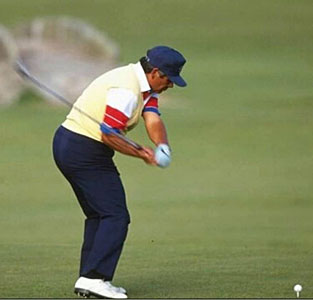
How does the clubhead get on the other side of the hands to hit the ball?
Click here to go back to the home page.
In an online golf forum thread a forum member posted a capture image of Lee Trevino at the P5.5 position, and then posted the following comment-: "Tell me a story about how you think the club head gets on the other side of the hands to hit the ball."
Here is a copy of that capture image of Lee Trevino.

In this image, Lee Trevino is at the P5.5 position and his clubshaft has shallowed down to a shallower plane during his early-mid downswing. His clubhead is obviously well behind his hands and much further away from the ball-target line than his hands.
Most professional golfers start releasing the club at approximately this P5.5 time point so that the clubshaft becomes parallel to the ball-target line at the P6 position (which is defined as the end of the mid-downswing), and where the clubhead and hands are equidistant away from the ball-target line. Then, as the golfer transitions into the late downswing the clubhead bypasses the hands and becomes closer to the ball-target line than the hands (which means that the clubhead is "on the other side of the hands").
To write a realistic story about "how you think the clubhead gets on the other side of the hands" in a professional golfer's downswing, the storyteller must not only describe the club release phenomenon in terms of the path of clubhead motion, but he must also describe the biomechanical and mechanical actions that cause, and accompany, the club release phenomenon.
Here is how I would tell the story about how the clubhead gets on the other side of the hands in a professional golfer's downswing.
First of all, I believe that most professional golfers are using a TGM swinging technique, where the term TGM refers to Homer Kelley's book called "The Golfing Machine", and therefore whenever I use the term "TGM" I am referring to one of Homer Kelley's TGM concepts.
I believe that Lee Trevino, like most professional golfers, uses a TGM swinging technique. Unfortunately, I could not find any slow motion swing videos of Lee Trevino's golf swing action, so I am instead going to use another professional golfer's golf swing action to tell the same story - and I will use Henrik Stenson as my prototypical role model of a professional golfer who uses a TGM swinging technique.
Here are face-on capture images of Henrik Stenson's transition from the mid-downswing to the late downswing - captured from the following ultra slow motion swing video at https://www.youtube.com/watch?v=OKfe6F8PmUc&t=5s .
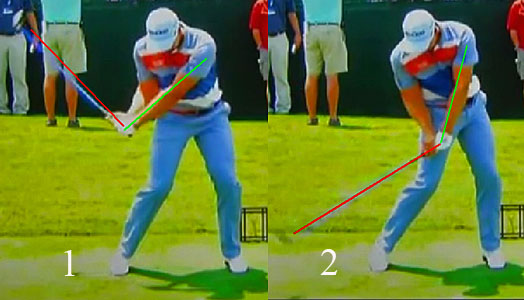
Image 1 is at the P5.5 position (where his clubhead is further away from the
ball-target line than his hands), and image 2 is at the P6.3 position (where his
clubhead is closer to the ball-target line than his hands).
I have drawn a red line along his clubshaft and a green line along the length of his left arm, and the angle between the two lines shows his degree of clubhead lag. At P5.5, Henrik Stenson has about 90 degrees of clubhead lag and he has far less clubhead lag at P6.3 due to the fact that he is releasing the club between P5.5 and P6.3. To biomechanically perform a club release action between P5.5 and P6.3, Henrik Stenson's left wrist must move from being radially deviated at P5.5 to being far less radially deviated at P6.3. Therefore, the primary cause of the fact that the "clubhead gets on the other side of the hands" between P5.5 and P6.3 is the club release phenomenon, which Homer Kelley called the release of power accumulator #2 (release of PA#2).
Note that the back of Henrik Stenson's left hand is roughly parallel to the ball-target line at both P5.5 and P6.3, which means that a counterclockwise rotation of the left hand is not the primary causal factor that causes the clubhead to bypass the hands between P5.5 and P6.3.
To better understand the biomechanics of the club release phenomenon that is happening in Henrik Stenson's downswing action, it is better to study DTL capture images.
Here are DTL capture images from the Henrik Stenson swing video.
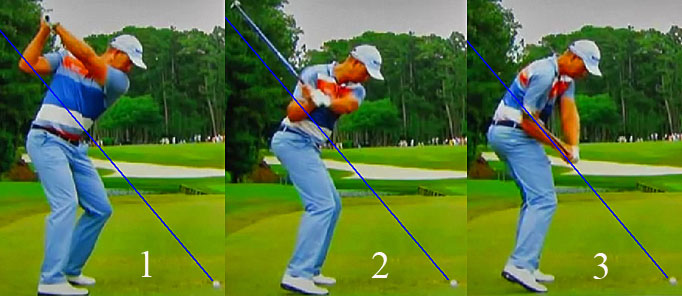
Image 1 is at his end-backswing position (P4 position), image 2 is at the end of
his early downswing position (P5 position) and image 3 is at his mid-downswing
position (P5.5 position).
The blue line represents the elbow plane line, which I drew between the ball and his right elbow when he he was at the address position. The elbow plane is also his impact zone plane - and his clubshaft is aligned along his elbow plane line at impact.
Image 1 shows that his clubshaft and hands are well above the elbow plane at his end-backswing position. Note that his clubshaft is straight-in-line with his left arm at his P4 position, and that represents an intact LAFW alignment. The intact LAFW concept is a TGM concept and the term "LAFW" is an abbreviation of the term "left arm flying wedge".
Henrik Stenson maintains an *intact LAFW throughout most of his backswing, downswing and early followthrough.
(* If you want to better understand my personal description of the intact LAFW concept, then you can watch this part 1 video - https://youtu.be/rNHIFy4dzIg - from my 7-part video project on "How to Perform a Golf Swing Like a PGA Tour golfer", where I start describing the intact LAFW concept at the 22:20 minute time point of the video)
Henrik Stenson uses a neutral left hand grip, and in order to have his clubshaft straight-line-aligned with his left arm, thereby creating an intact LAFW alignment, his left wrist has to be slightly dorsiflexed, and it cannot be anatomically flat. An anatomically flat left wrist (AFLW) is a slightly palmar flexed left wrist, where the back of the left hand is perfectly straight-in-line with the watchface area of the lower left forearm. Henrik Stenson's slightly dorsiflexed left wrist alignment is referred to as a geometrically flat left wrist (GFLW) alignment and the amount of dorsiflexion present is just the amount of left wrist dorsiflexion (extension) required to align the clubshaft in a straight-line-alignment relative to the left arm. If a golfer, who adopts a neutral left hand grip at address, has an intact LAFW/GFLW alignment, then his clubface will always be straight-line-aligned (parallel) to the back of his GFLW and also the watchface area of his left lower forearm at all moments during the backswing, downswing and early followthrough - presuming that the intact LAFW alignment is not disrupted by any left wrist bowing/bending, or any excessive left forearm pronation or supination, that would cause the clubshaft to no longer be straight-line-aligned with his left arm.
Image 2 shows Henrik Stenson at his P5 position. Note that Henrik Stenson has been shallowing his clubshaft between P4 and P5, but he still has an intact LAFW/GFLW alignment.
Image 3 shows Henrik Stenson at his P5.5 position, and one can note that he has shallowed both his hands and clubshaft down to the elbow plane by P5.5. Henrik Stenson still has a GFLW (and he has not altered his degree of left wrist dorsiflexion), but he no longer has an intact LAFW because he needed to pronate his left forearm more between P5 and P5.5 in order to shallow his clubshaft down to the shallower elbow plane by P5.5. The biomechanical action of left forearm pronation moves the clubshaft to a shallower plane relative to the left upper arm. Although he does not have an intact LAFW, he does have an *intact LFFW (left forearm flying wedge) aligment where the clubshaft is still straight-line-aligned with the watchface area of his left lower forearm, and where his clubface is still parallel to the back of his GFLW and the watchface area of his left lower forearm.
(* You can read the following short review paper called "Difference between a left arm flying wedge (LAFW) and a left forearm flying wedge (LFFW)" if you want to better understand this issue)
Now, let's consider how Henrik Stenson gets his clubhead to bypass his hands as he transitions from his P5.5 position to his later downswing's P6 => P7 positions - by studying the following DTL capture images.

Image 1 is at Henrik Stenson's P5.5 position, image 2 is at his P6 position, image 3 is at his P6.1 position, image 4 is at his P6.5 position, and image 5 is at impact.
Note that Henrik Stenson's hands, clubshaft and clubhead are all positioned on the elbow plane between P5.5 and impact - as viewed from a DTL perspective.
At P5.5, note that the back of Henrik Stenson's GFLW (left hand) is parallel to the elbow plane, and note that he still has retained ~90 degrees of clubhead lag. Note that he is starting to release his club between P5.5 and P6.1 and that the "club release" phenomenon biomechanically involves a "left wrist ulnar deviation" biomechanical motion, which is commonly referred to as a "left wrist uncocking" motion. Note that the back of his GFLW (left hand) remains on (and therefore parallel to) the elbow plane between P5.5 and P6.1 even though his left hand is moving more targetwards between P5.5 and P6.1. If his GFLW remains on the elbow plane between P5.5 and P6.1 while his left wrist uncocks in the plane of left wrist radial => ulnar deviation (which is also within the plane of his intact LFFW, which remains constantly positioned parallel to the elbow plane), then that explains how his clubshaft remains on the elbow plane between P5.5 and P6.1. At his P6 position, Henrik Stenson's clubshaft is parallel to the ball-target line and also parallel to the ground, and both his clubhead and the back of his left hand are on the elbow plane (as viewed from a DTL perspective). If the clubhead bypasses Henrik Stenson's left hand between P5.5 and P6.1 - while both the clubhead and back of his left hand (GFLW) are on the elbow plane - then his clubhead moves across (and not under or above) his left hand between P5.5 and P6.1 as his "clubhead gets on the other side of his hands" between P5.5 and P6.1. That "clubhead moving across the hands" phenomenon can clearly be discerned by imagining the clubhead path between image 1 and image 3.
Note that his clubhead continues to track down the elbow plane between P6.1 (image 3) and impact (image 5).
How much does Henrik Stenson rotate his left hand (GFLW) counterclockwise during the early phase of his later downswing as he moves from the P6 to the P6.5 position? The answer is that there is very little counterclockwise rotation of his left hand (GFLW) happening during that time period. To make that fact more apparent, I have drawn a green line down the middle of his left antecubital fossa and a red line along the lower 3" of his left lower radial bone just above his left wrist crease area. Note that the green line is facing the camera to the same degree in images 2, 3 and 4, and that means that his left humerus is internally rotated to the same degree during the P6 => P6.5 time period, which means that he is not externally rotating his left humerus during that time period. Note that the red line is aligned slightly to the left of the green line at P6, but that it does not appear to rotate more counterclockwise (relative to the green line) between P6 and P6.5 from an angular rotational perspective, which means that there is very little left forearm supination happening between P6 and P6.5. Most of the left forearm supination required to ensure that Henrik Stenson's clubface is square at impact happens between P6.5 and impact.
By also avoiding any significant amount of left forearm supination from happening between P5.5 and P6.1, Henrik Stenson can ensure that his clubshaft remains on-plane (on the elbow plane) during that transitional time period when the clubhead moves from being behind the hands at P5.5 to being in front of the hands at P6.1 and that on-plane clubshaft motion causes his clubhead path to cross his hands at about the P6 position (as viewed from a DTL viewing perspective). If Henrik Stenson used an excessive amount of left forearm supination during that P5.5 => P6.1 time period, then his clubshaft would move off-plane in an over-the-plane (clubshaft steepening) manner, and that would cause his clubhead to move over his hands at P6 in a "tumbling manner" between P5.5 and P6.1. Professional golfers, who have their clubshaft on-plane between P4 and P5.5 do not need to use a "tumbling action" as they transition from P5.5 to P6.1+ because they are not shifting planes between P5.5 and P6.1, and the use of any "tumbling action" would represent a significant swing fault. The only reason to use a "tumbling action" during the time period when the clubhead transitions from being behind the hands at P5.5 to being on the other side of the hands at P6.1 (as viewed from a DTL viewing perspective) would be the scenario where the golfer's clubshaft is off-plane (and too much under-the-plane) at P5.5 and where an imaginary line extended outwards from the butt end of the club would point at an imaginary point on the ground that is well outside the ball-target line. To get on-plane during the transitional time period between P5.5 and P6.1 in that suboptimal scenario, the golfer would have to use a small amount of left forearm supination in order to steepen the clubshaft in a "tumbling" manner. However, because Henrik Stenson's clubshaft is continuously on-plane during his early-mid downswing between P4 and P5.5, he does not need to use a "tumbling maneuver" during the time period between P5.5 and P6.1 and he can simply allow his clubhead to cross his hands (as viewed from a DTL viewing perspective) as his clubhead moves from being behind his hands to being on the other side of his hands (secondary to his PA#2 release action).
It is important to understand that the clubhead will only cross the hands (as viewed from a DTL viewing perspective) during that transitional time period when the clubhead moves from being behind the hands at P5.5 to being on the other side of the hands at P6.1 if the professional golfer meets three conditions - i) if he uses the intact LFFW/GFLW technique; ii) if his clubshaft remains continuously on-plane during that entire time period and iii) if the clubshaft's impact zone plane is not too shallow and if it is intermediate between the elbow plane and the TSP in terms of steepness. If the golfer shallows the clubshaft down to the hand plane, then the clubhead will pass below the hands as it moves from being behind the hands at P5.5 to being on the other side of the hands at P6.1.
Sergio Garcia is an example of a golfer who shallows his clubshaft down to the hand plane by P5.5, and his clubhead therefore passes below his hands between P5.9 and P6.1.
Sergio Garcia capture images.

Note that Sergio Garcia's clubshaft is well below the plane of his right forearm
at P5.5 (image 1) and that his clubhead is below the level of
his hands at P6 (image 2).
Also, a significant subset of professional golfers do not use the intact LFFW/GFLW swing technique and they approach the P5.5 position with an overtly bowed left wrist that angles the clubshaft slightly underplane relative to the left lower forearm. Some of those professional golfers (like Jordan Spieth, Jon Rahm and Dustin Johnson) bow their left wrist during their backswing action, while other professional golfers (like David Toms and Gary Woodland) only start to bow their left wrist between P5 and P5.5. Nonetheless, if the professional golfer reaches the P5.5 position with a bowed left wrist that angles his clubshaft more groundwards (relative to his left forearm), then his clubhead path will naturally move under the hands between P5.5 and P6.1 (as viewed from a DTL viewing perspective).
Consider an example - Jordan Spieth.
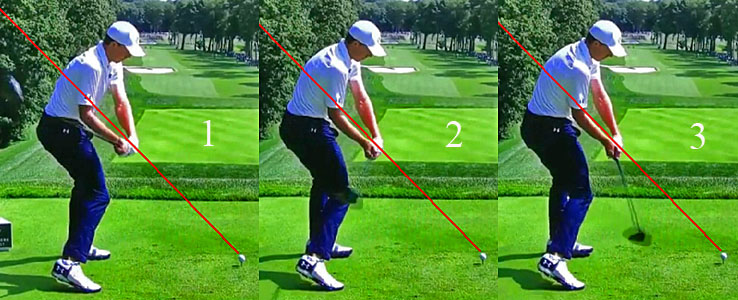
Image 1 is at the P5.5 position, image 2 is at the P6 position and image 3 is at
the P6.1 position.
The red line was drawn along the length of his clubshaft when he was at impact, and it represents his impact zone plane.
Note that his hands are on the red line at P5.5, but his clubhead is well below that red line because his left wrist bowing action has angled his clubshaft more groundwards relative to his left forearm.
Note that his hands remain on that red line between P5.5 and P6.1, but his clubhead moves under his hands between P5.5 and P6.1 during the time period when the clubhead moves from being behind the hands to being on the other side of his hands (from a DTL viewing perspective), and that phenomenon is naturally expected, and perfectly acceptable.
What is not acceptable is for the clubhead to move over the hands during the P5.5 => P6.1 time period when the clubhead moves from being behind the hands to being on the other side of the hands (from a DTL viewing perspective).
Here is an example of a golf instructor, Mike Malaska, who moves the clubhead over the hands during the P5.5 => P6.1 time period when the clubhead moves from being behind his hands to being on the other side of his hands (from a DTL viewing perspective).
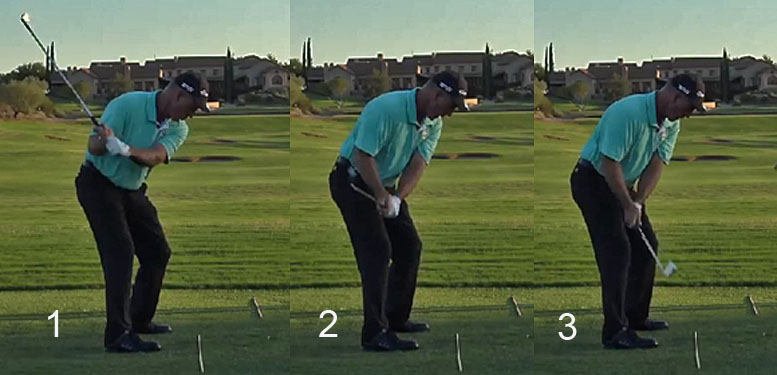
Image 1 shows Mike Malaska using a short backswing action. Note that his right
palm is parallel to the inclined plane (swingplane) on which he clubshaft lies
at that shortened end-backswing position.
Image 2 shows him starting to perform the "Malaska Move" where he drops his hands to a point just outside his right thigh and where his hands are very close to his body and behind the toe line. Note that his right palm is now more vertical, and therefore parallel to a more steeper plane, than it was in image 1.
Image 3 shows how he swings the clubhead over his hands in order to get the clubhead outside his hands - using a "tumble action" ("clubshaft-steepening" action). Note that his right palm is partially on top of the club handle and it is not under the club handle in image 2 and image 3 - as seen in Henrik Stenson's, Sergio Garcia's and Jordan Spieth's P5.5 and P6.1 capture images. Note that Henrik Stenson, Sergio Garcia and Jordan Spieth have a significantly supinated right forearm at both the P5.5 position and the P6.1 position and note that their right palm is partially under the club handle (and not partially on top of the club handle).
So far, I have told the story of how the clubhead gets from being behind the hands at the P5.5 position to getting on the other side of the hands at the P6.1 position secondary to the release of PA#2, and I have also described many biomechanical elements that must happen during that P5.5 => P6.1 time period. However, I have not described the forces/torques that are operant during a professional golfer's club release action (PA#2 release action).
I previously stated that most professional golfers use a TGM swinging action, which involves the *sequential release of PA#4 => PA#2.
(* I will not be be describing the TGM power loading/release concepts in this short review paper and interested readers can optionally read the following short review paper for further details).
The club release phenomenon (PA#2 release phenomenon) in a TGM swinging action happens passively according to the laws of physics (law of the double pendulum swing model that explains the club release phenomenon seen in an Iron Byron type of golf club testing machine). Many golfers refer to that type of passive release phenomenon as a centrifugal release phenomenon, but I prefer to think of the club release phenomenon being due to the *hand arc path becoming more "tightly" circular, which causes the club to gain angular momentum because of the effect of the changing hand arc path's direction relative to the COG of the club, and I think that the D'Alembert principle better explains the physics of the club release phenomenon.
(* If you want to read much more about the topic of how a changing direction of the hand arc path affects the club release phenomenon, then you can read topic number 5 in this review paper)
Even though I believe that most professional golfers use a TGM swinging action, where the club release phenomenon happens passively according to the laws of physics, some golf instructors teach a swing-hitting technique where the right hand applies an active push-force against the aft side of the club handle below the coupling point in order to apply a postive alpha torque during the mid-late downswing action.
Brian Manzella is an example of a golf instructor who teaches his student golfers to apply a positive alpha torque, using an active right arm/hand push-action that is applied to the aft side of the club handle, starting in the early phase of the mid-downswing.
An alpha torque, if it is positive, is an in-plane torque that is applied at the grip handle and it causes the clubshaft to actively move downplane while remaining parallel to the swingplane. A negative alpha torque is a restraining torque that impedes the club’s actively released in-plane motion.
Here is a link to a vimeo video - https://vimeo.com/121990372 - where Brian Manzella describes the concept of a positive alpha torque between the 0:30 - 2:40 minute time point of the video. In particular, note what he states between the 2:00 - 2:38 minute time point of the video, where he suggests that if a golfer does not start applying a positive alpha torque at about the P5 position - by pushing against the aft (back) side of the club handle with the right hand while the left hand pulls the club handle - that the club will not catch-up to the left arm by impact. In other words, Brian Manzella does not believe that the club will automatically/naturally catch-up to the left arm due to a passive club releasing action based on the shape of the hand arc path (which operates on the basis of the D'Alembert principle) and he believes that a golfer must apply a positive alpha torque via the biomechanical mechanism of the right hand applying an active push-force against the back of the shaft during the mid-late downswing.
I do not believe that professional golfers are applying a positive alpha torque during the club release phase, when the clubhead moves from being behind the hands (at P5.5) to getting on the other side of the hands (by P6.1), and there is substantial scientific evidence to back up my claim that professional golfers are not applying a positive alpha torque during their late downswing after the clubshaft bypasses the P6 position.
Consider these capture images of Luke List's downswing action.

Image 1 is at P4, image 2 is at P5.2, image 3 is at P5.5, image 4 is at P6,
image 5 is at P6.3 and image 6 is at P6.8.
I have drawn a yellow line along Luke List's proximal clubshaft.
Note that his entire clubshaft forms a straight line with that yellow line at his P4 position, which means that no alpha torque is being exerted at this time point.
Also, note that Luke List must be applying a positive alpha torque at P5.3 (image 2) because his peripheral clubshaft is bent back (relative to his hands and proximal clubshaft). Note that he is applying less positive alpha torque at P5.5 (image 3) because his peripheral clubshaft is less bent backwards.
Note that Luke List must be applying a negative alpha torque at P6 (image 4) and at P6.3 (image 5) because his peripheral clubshaft is bent forwards, which means that he is not applying any *positive alpha torque during the club release phenomenon that is happening as he transitions into the early phase of his later downswing.
(* If you want to read more about this topic of positive alpha torque, then you can read the "Topic of positive alpha torque being applied during the later downswing" subsection of topic 5 in this review paper)
If you want to read a landmark review article on this topic of "positive versus negative torque", then I would highly recommend this article written by the renown golf physicist David Tutelman.
Jeff Mann.
January 2019.